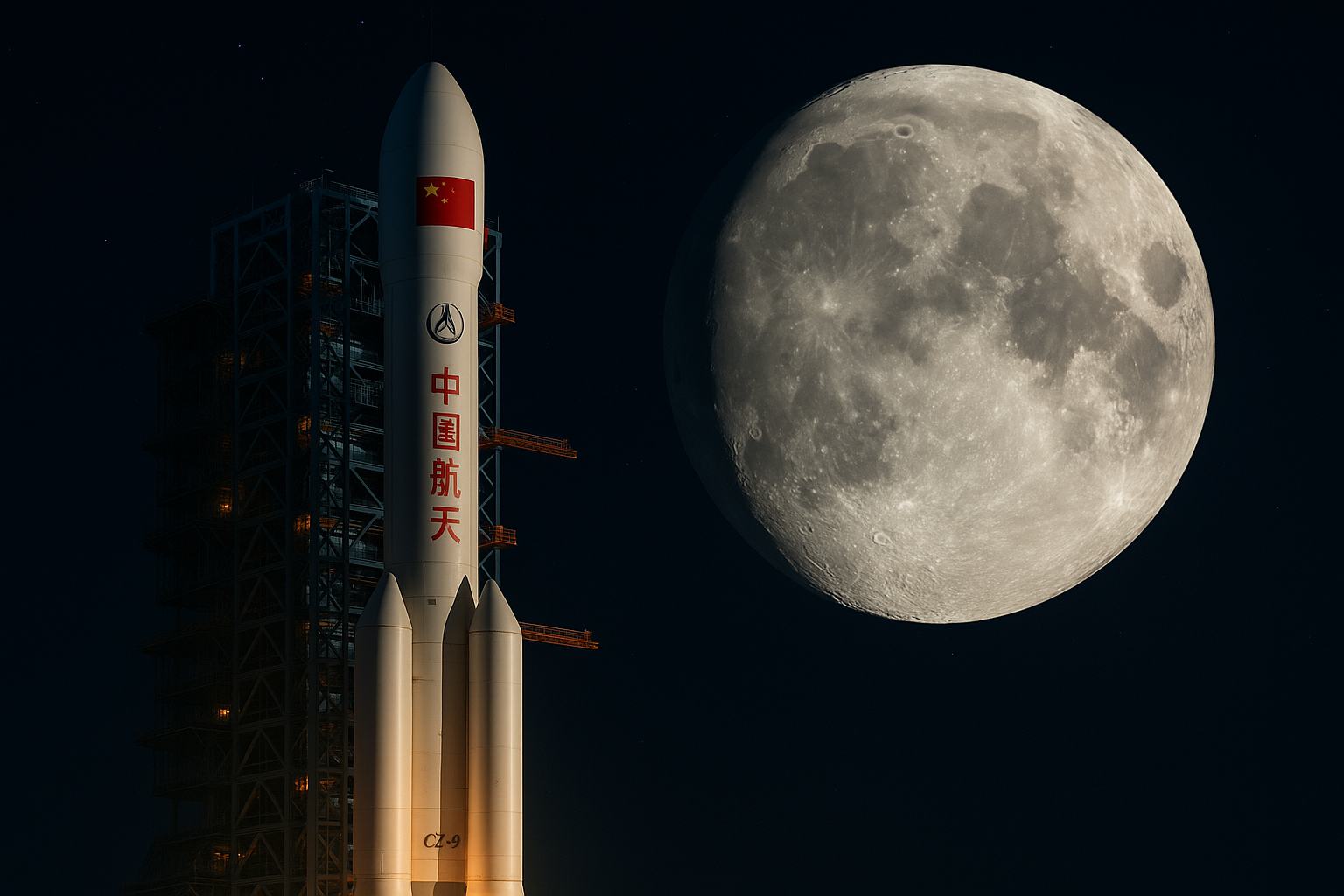The race to the Moon is heating up—but it may not be the Americans who win. While NASA aims to return astronauts to the lunar surface, China is making bold moves toward a South Pole landing in 2029. Yet the reality for the U.S. mission is increasingly complex, marked by technical challenges and delays.
I remember staying up late as a kid, watching the Apollo missions on TV, dreaming of astronauts walking on the Moon. Today, that dream feels closer than ever—but also surprisingly fragile. NASA’s Artemis III mission, originally set for 2027, now faces potential setbacks that could stretch into several more years.
Recent warnings from the Aerospace Safety Advisory Panel (ASAP) highlight the difficulties ahead. They caution that, despite intentions, U.S. astronauts may not step onto the Moon before their Chinese counterparts. The panel’s concerns are grounded in technical realities, not speculation, reflecting the tricky landscape of modern space exploration.
Challenges facing NASA’s Artemis III missionI did 30 minutes of brisk walking every day for a month—here’s what happenedWith the end of Windows 10, here’s what NVIDIA Graphics card owners can expect
At the heart of the issue is the Human Landing System (HLS), a modified SpaceX Starship designed to carry astronauts to the lunar surface. Developing a spacecraft capable of landing and taking off safely on the Moon is no small feat. The HLS must also demonstrate the ability to transfer fuel in orbit, a crucial step before astronauts can ever board.
So far, Starship flights have been suborbital, which means the vehicle has not yet proven its ability to operate in true orbit. SpaceX must show that the Starship can stabilize in orbit, maneuver reliably, and perform multiple orbits around Earth. Only after these milestones can the HLS be qualified for lunar missions.
Moreover, NASA requires at least two successful HLS flights to the Moon before allowing astronauts onboard. The vehicle must not only land safely but also return astronauts to lunar orbit. The panel acknowledges SpaceX’s achievements, especially cost reductions through reusable rockets, but emphasizes that the pace of development remains far too slow.
Additional delays across NASA programs
The Starship is not the only source of concern. NASA is experiencing delays across other essential programs, including life support systems and space suits for Artemis III astronauts. Every component must function flawlessly for a safe lunar mission.
These delays mean that even if Starship’s HLS is ready, the overall mission timeline could slip. With so many moving parts, NASA faces the daunting challenge of synchronizing complex technologies and ensuring each step meets stringent safety standards. It’s a far cry from the relatively simple Apollo missions of the 1960s, though the stakes—and technical complexity—are much higher today.
Meanwhile, China is progressing steadily. Its lunar program, backed by state support, plans a landing at the Moon’s South Pole in 2029. While the U.S. and China avoid framing this as a “race,” the current trajectory suggests the probability of American astronauts landing first is shrinking. Chinese lunar ambitions may outpace U.S. efforts simply because NASA is juggling more moving pieces.
The reality of modern lunar explorationThe amazonian giant fish turned into luxury fashion and the strong protest from fishermenThe world’s richest king : he owns 17,000 homes, 38 private jets, 300 cars, and 52 luxury yachts
What does this mean for space enthusiasts like me ? It’s a lesson in patience and planning. As a lifelong fan of lunar exploration, I’ve learned that ambition alone isn’t enough. Success depends on meticulous preparation, testing, and problem-solving. Watching Artemis III evolve reminds me how much modern spaceflight relies on integrating multiple advanced systems simultaneously.
Even with SpaceX’s innovations and private sector involvement, the mission remains risky. Any misstep in Starship testing, HLS validation, or astronaut systems could delay the landing for years. Lunar landings are no longer just a question of engineering—they involve coordination across agencies, rigorous testing, and contingency planning for every imaginable scenario.
Despite the challenges, there’s reason for optimism. Artemis III aims to achieve a historic milestone : returning humans to the Moon for the first time since 1972. The mission represents a renewed commitment to space exploration, pushing technology, knowledge, and ambition to new heights. It’s a reminder that space exploration is as much about learning from setbacks as celebrating successes.
For those following this closely, the unfolding story is fascinating. Will China claim the South Pole first ? Will NASA overcome Starship delays and complex system integration ? The next decade promises to be a defining moment for lunar exploration and the future of human spaceflight.
Whether you’re a space enthusiast or just curious about technological progress, the Artemis III mission is a story worth watching. As the U.S. and China push the boundaries of what’s possible, we’re reminded that space exploration requires courage, innovation, and an extraordinary commitment to solving problems that were unimaginable just a few decades ago.
What do you think : will NASA catch up to China, or is this a turning point where the U.S. loses its first-place advantage ? Share your thoughts, debate the strategies, and follow this journey—because the next giant leap for humanity is closer than ever, and we all get to watch it unfold.

